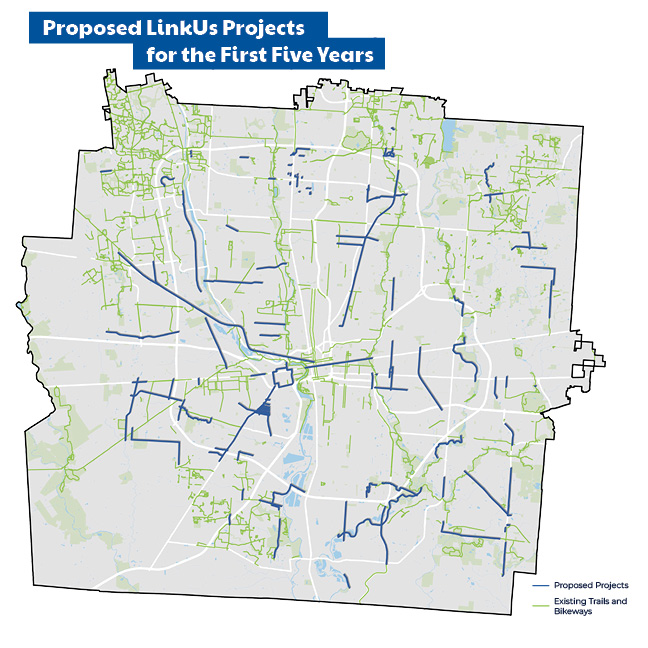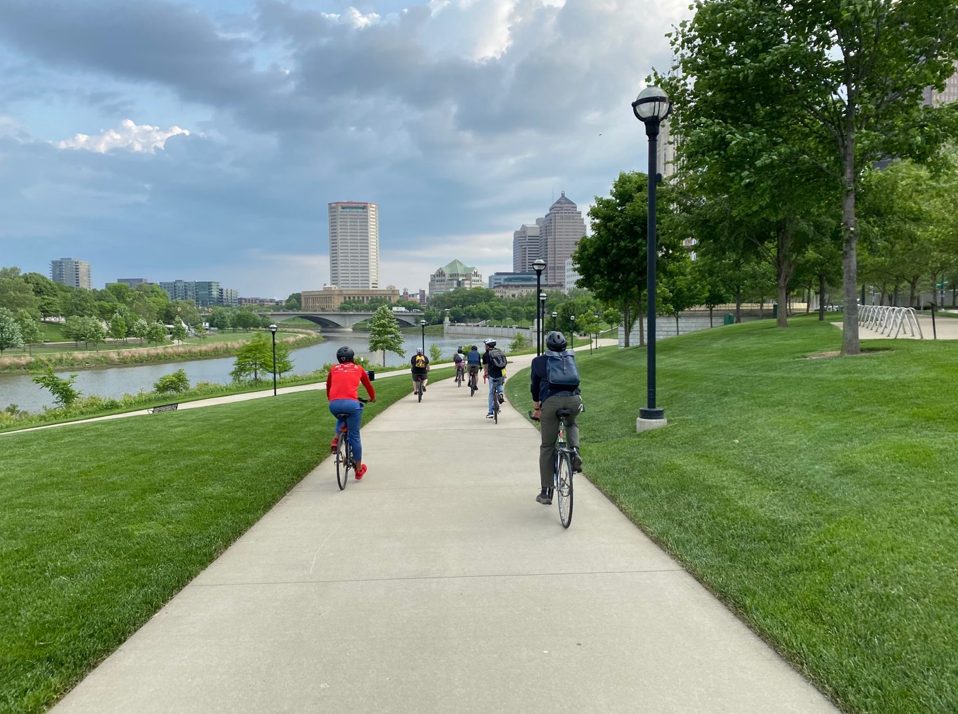 By STEPHEN PATCHAN
By STEPHEN PATCHAN
Published May 11, 2021 in This Week Community News
Imagine if you could bike anywhere at any time safely and comfortably in central Ohio.
Not only you, but your spouse, parents and children could bike to work, school, dinner, the library, your place of worship, a grocery store, movies, doctor visits, shopping, the gym, your kids’ dance classes and so forth.
Based on recent trends and surveys, this idea might not be as far-fetched as you think. Expanding our bicycle infrastructure could not only make for a better quality of life, but it also could be an effective tool at combating our region’s challenges as we grow in population while balancing household budgets.
Central Ohio is expected have 3 million people by 2050. Accommodating our growth requires creativity and foresight, by designing communities that are denser and focused on access to amenities and infrastructure. In other words, we will need to utilize our streets more effectively, as opposed to widening streets and building more roads. By building out our bicycle network, we are providing a solution to balance household economics and avoid wasted hours in traffic.
Automobiles have their purposes, but owning one is a major expense. Our residents spend an average of $8,000 to $10,000 per year on auto ownership alone. In fact, young adults in their 20s, who might own a car well into their 80s, can spend $500,000 over their lifetime just by owning an automobile.
Many families in the region are one-plus-car households and could get by with a single car. On the flip side, many of our neighbors do not have autos or must rely on unreliable vehicles that are financial burdens.
Eliminating some or all car costs could create a paradigm shift in household financial flexibility. This extra cash could go towards rent, bills, buying a home, better health care, paying a child’s tuition, breaking the poverty cycle and retiring earlier than expected.
If we build a great system, there is a very good chance that people will bike. The current piecemeal network serves only the 1% of cyclists who will bike every day, regardless of the type of infrastructure that is place. A disconnected bicycle system ultimately curtails efforts to reach the fertile “interested but concerned” potential cyclist demographic that makes up roughly 45% of central Ohio’s population.
If the region were to commit to making all streets bicycle-friendly, where everyone from 8 to 80 years old could bike to any destination, more trips could be converted from driving to bicycling, especially for short trips.
Approximately 50% of regional trips are fewer than 5 miles, which is defined as “short” by the Federal Highway Administration – and a distance that many regional residents commute to work and school. Approximately 30% of regional trips are fewer than 3 miles, which is a reasonable distance for running errands, small grocery pickups and social visits, such as dinner, coffee or a movie.
A complete bicycle system, including trails, would help increase options for people to get around and decrease the sole focus on having to own a car. It also would increase access to transit.
This isn’t to argue against decreasing car and truck accessibility or increasing traffic congestion. Based on the data points already stated, it is reasonable to consider that a fully connected bicycle network built for all people could convert enough auto trips to bicycle trips so that all travel modes could function effectively.
The region’s flat topography is prime for biking. We still have the Midwest winters to deal with, but Minneapolis and Montreal, the two most bike-friendly cities in North America, scoff at our cold-weather season.
As central Ohio continues to grow and our household budgets are stretched, big and bold solutions are needed to truly transform our region and ensure equitable access to transportation for all. Biking certainly is a part of that.
Stephen Patchan is assistant director planning & sustainability at the Mid-Ohio Regional Planning Commission. MORPC’s purpose is to bring communities of all sizes and interests together to collaborate on best practices and plan for the future of the region.






